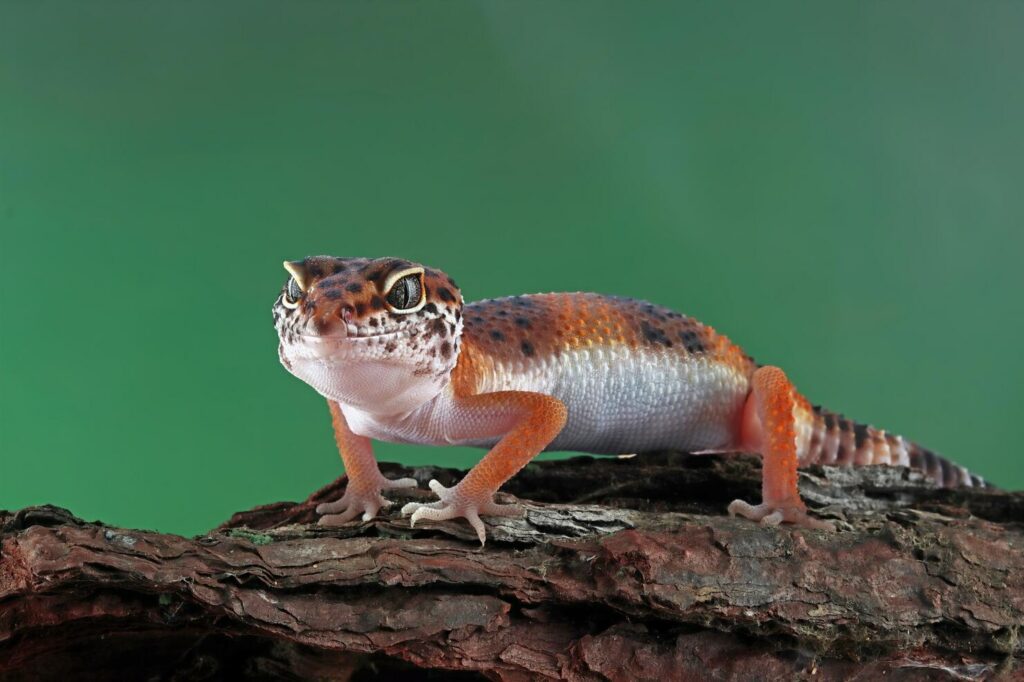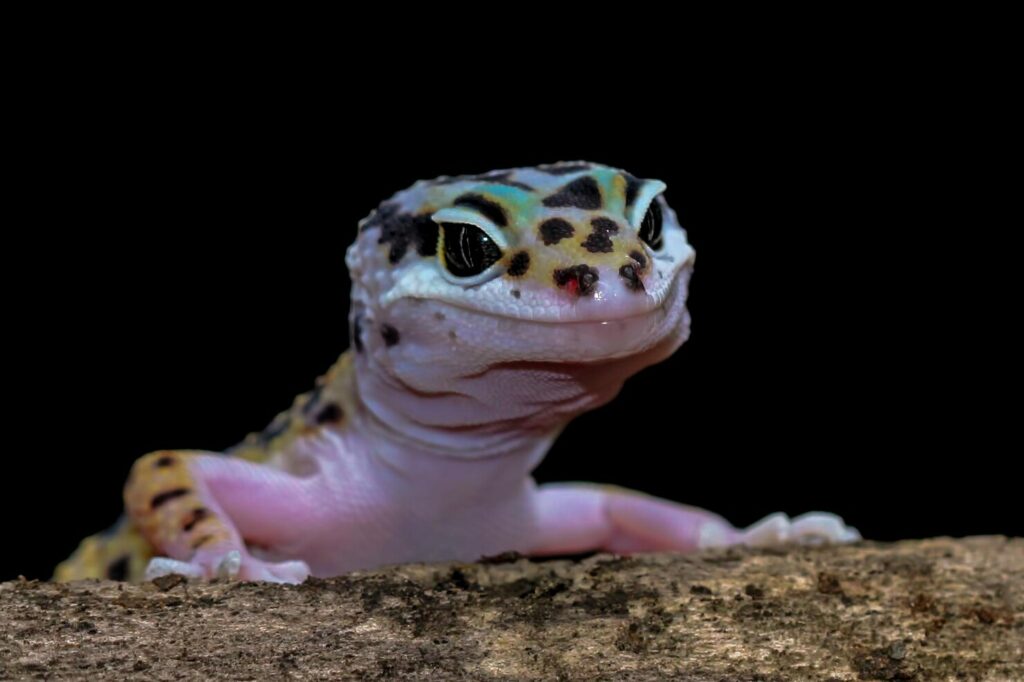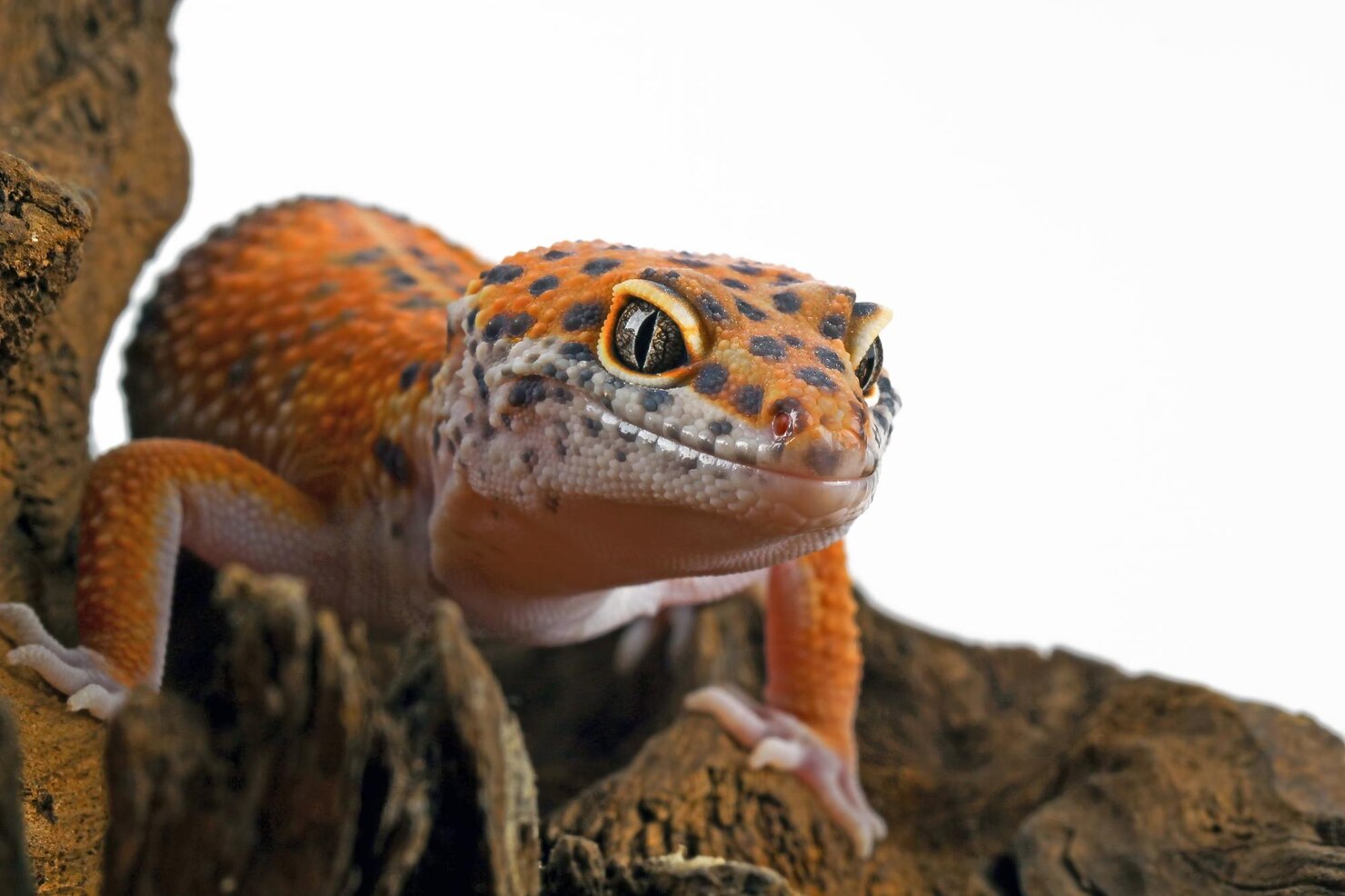Leopard geckos (Eublepharis macularius) are among the most popular pet reptiles due to their docile nature, charming appearance, and relatively low-maintenance requirements. As a leopard gecko owner, it’s important to understand the various stages of their lifespan and the changes they may undergo as they age. In this comprehensive guide, we will explore the typical leopard gecko lifespan, how to estimate their age, and what to expect as your gecko grows older.
You may also want to read about the best substrate.
Understanding the Leopard Gecko Lifespan
Before delving into the various stages of a leopard gecko’s life, it’s crucial to have a realistic understanding of their average lifespan. Proper care, nutrition, and a suitable habitat are essential for ensuring your gecko lives a long and healthy life.
On average, leopard geckos can live for 10 to 20 years or more in captivity. However, there is considerable variability in lifespan based on factors such as genetics, diet, environment, and the quality of care provided. Some leopard geckos may reach the upper end of this range with exceptional care, while others may have shorter lifespans if not properly looked after. The Leopard Gecko Lifespan can differ a lot.

Estimating Your Gecko’s Age
Determining the age of a leopard gecko can be challenging, especially if you acquire one as an adult or from a source with limited information. However, there are several clues that can help you estimate your gecko’s age:
1. Size:
- Hatchling leopard geckos are typically smaller, measuring about 3 to 4 inches in length. As they age, they gradually grow, reaching their full adult size of 6 to 10 inches.
2. Tail Size:
- Younger leopard geckos have plump, fleshy tails. With age, their tails become more slender and may show signs of calcium storage in the form of a white, bumpy appearance.
3. Coloration:
- The vibrancy of a leopard gecko’s colors can change with age. While younger geckos often display brighter colors, older geckos may develop a more muted appearance.
4. Breeding Records:
- If you have access to breeding records or purchase your gecko from a reputable breeder, you may have more accurate information about its age.
5. Behavior:
- Hatchling geckos are typically more active and may be more skittish than older, more docile geckos. Observing their behavior can provide clues about their age.
Stages of a Leopard Gecko’s Life
As leopard geckos age, they go through various life stages, each characterized by distinct behaviors and physical changes. Understanding these stages can help you provide appropriate care for your gecko at different points in its life.
1. Hatchling Stage (0-6 Months):
- Hatchling leopard geckos are tiny and vulnerable, typically measuring 3 to 4 inches in length.
- They have vivid colors and patterns.
- At this stage, they are highly active and may require more frequent feedings to support their rapid growth.
2. Juvenile Stage (6-12 Months):
- Juvenile leopard geckos continue to grow quickly, reaching lengths of 5 to 6 inches.
- They are still relatively active and may exhibit more exploratory behavior.
- This stage is characterized by a transition from bright hatchling colors to more subdued adult colors.
3. Sub-Adult Stage (1-2 Years):
- Sub-adult leopard geckos are around 6 to 8 inches in length.
- They become less active compared to juveniles but are still relatively active compared to adults.
- Sub-adults may begin to show signs of sexual maturity, and males may exhibit territorial behaviors.
4. Adult Stage (2+ Years):
- Adult leopard geckos are fully grown, with lengths ranging from 6 to 10 inches.
- They are generally more docile and less active than younger geckos.
- Males may develop enlarged femoral pores and visible hemipenal bulges.
- Female geckos may become gravid (pregnant) if they are paired with a male and provided with suitable nesting conditions.

Common Age-Related Changes and Health Considerations
As leopard geckos age, they may experience several age-related changes and health considerations that owners should be aware of:
1. Slower Metabolism:
- Older geckos have slower metabolisms, which means they require fewer feedings and may be more prone to weight gain if overfed.
2. Reduced Activity:
- Adult leopard geckos are generally less active than juveniles and may spend more time resting in hide spots.
3. Reduced Reproductive Activity:
- Female geckos may experience a decrease in reproductive activity as they age, with fewer clutches of eggs.
4. Dental Health:
- As geckos age, they may experience dental issues. Providing a diet with proper calcium and maintaining dental hygiene can help prevent dental problems.
5. Tail Loss:
- Older geckos may be more prone to tail loss due to stress or handling. Be gentle when handling your gecko to minimize the risk of tail loss.
6. Lifespan Variability:
- Remember that individual leopard geckos may have different lifespans based on genetics and care. Some may live longer than the average, while others may have shorter lives.
Tips for Caring for an Aging Leopard Gecko
Caring for an aging leopard gecko involves providing appropriate accommodations and addressing their changing needs:
1. Adjust Feeding Habits:
- As your gecko ages, adjust its feeding schedule and reduce the frequency of feedings to accommodate its slower metabolism.
2. Dental Care:
- Pay attention to your gecko’s dental health. Ensure they have access to calcium supplements, and provide appropriately sized insects to prevent dental issues.
3. Create a Comfortable Habitat:
- Ensure your gecko’s enclosure offers a comfortable environment with appropriate temperature and humidity levels. Make sure to provide a good lamp.
- Provide multiple hiding spots to accommodate their resting habits.
4. Monitor Weight:
- Keep an eye on your gecko’s weight to prevent obesity or excessive weight loss. A veterinarian experienced with reptile care can provide guidance on maintaining a healthy weight.
5. Offer Supportive Care:
- If your gecko develops age-related health issues, consult with a reptile veterinarian for appropriate care and treatment options.
6. Maintain Social Interaction:
- Continue to handle your gecko gently and maintain social interaction to reduce stress and ensure mental well-being.
Leopard Gecko Lifespan: Conclusion
Leopard geckos are remarkable reptilian companions known for their longevity and unique life stages. Understanding the typical lifespan of leopard geckos, estimating their age, and recognizing age-related changes and health considerations are essential aspects of responsible ownership.
By providing appropriate care, including adjustments to feeding habits, dental care, habitat conditions, and supportive care as needed, you can ensure that your aging leopard gecko enjoys a comfortable and fulfilling life throughout its years. With proper attention and care, these charming reptiles can remain cherished members of your family for many years to come, making the journey through their various life stages a rewarding experience for both you and your gecko.

